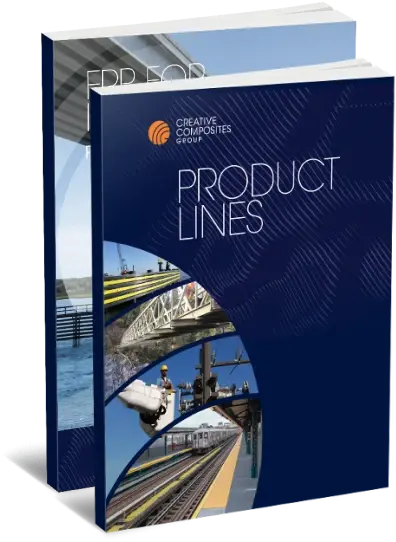FRP Manufacturing
Manufacturing FRP for Infrastructure, Equipment and Buildings
Traditional construction materials are susceptible to weather and normal wear over time. Concrete, wood or steel can deteriorate, impacting the integrity of the structure. While these materials may initially meet the municipal, commercial or industrial stakeholders' performance and investment objectives, they can end up costing more over the long term due to repair and replacement. A cost-effective alternative is FRP - a lightweight, high strength, highly durable material used for buildings, equipment, infrastructure and many other products.
Watch how Creative Composites Group is Manufacturing Innovative Composites for the Future!
What to Look For in an FRP Manufacturer
FRP is a material widely used in industries that often must adhere to stringent standards and requirements. To ensure your FRP manufacturer can provide a quality product that meets each application and industry's specifications, look for the following:
Experience
Your manufacturer should have demonstrable and verifiable experience manufacturing FRP solutions for the target application. Depending upon the project, the manufacturer may have to meet a minimum level of experience with various applications.
Standards & Certifications
An experienced FRP manufacturer will have extensive knowledge of regulatory requirements and can demonstrate compliance with these codes. Look for certifications that ensure a high standard of quality management to ensure they will meet your project's specifications.
On-site Availability
Though many FRP products can be delivered ready-to-use remanufactured, there are some products like equipment and infrastructure often other related needs that require specific expertise that many general contractors don't have. You'll want to ensure that your manufacturer can provide services on-site, such as installation guidance, product maintenance, modifications or required inspections.
How FRP Is Made
There are several manufacturing methods for producing FRP and the chosen technique depends on factors such as order volume, aesthetic requirements, size and desired function. Common manufacturing methods include:
Pultrusion
Vacuum Infusion
Filament Winding
Open Molding
Compression Molding
Resin Transfer Molding
Continuous Lamination
Used to produce composite panels, continuous lamination is an automated process where fiber reinforcements are saturated with resin before moving through a conveyor process which controls thickness and resin content to meet end product requirements. The material passes through a heating zone where the resin is cured to form a composite panel. FRP composite panels can be used for a variety of products including building and roofing panels, RV sidewalls and other industry applications.
Spray-Up
Structural Fabrication
Structural Assembly
CCG is the Largest Manufacturer of Structural FRP
in the U.S.
FRP is a resilient, lightweight and corrosion-resistant alternative for construction projects. CCG is a leader in manufacturing FRP composite products. We can manufacture and fabricate innovative FRP projects to meet your specifications and requirements.
